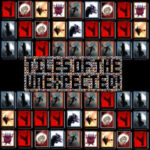Garena Free Fire: Kalahari - The Desert's Embrace
Garena Free Fire, a mobile battle royale sensation, thrives on its fast-paced gameplay, accessible mechanics, and vibrant maps. Among its trio of battlegrounds – Bermuda, Purgatory, and Kalahari – the desert-themed
Kalahari stands out for its unique blend of open expanses, intricate structures, and verticality. Introduced to the game with the OB20 update in February 2020, Kalahari brought a fresh tactical dimension to Free Fire, challenging players to adapt their strategies to its arid, yet surprisingly complex, landscape.
Kalahari, inspired by the real-world desert, offers a stark contrast to the lush greenery of Bermuda or the varied terrains of Purgatory. Its visual identity is defined by sandy dunes, rocky outcrops, and a collection of unique, often dilapidated, man-made structures that provide both cover and vantage points. This map encourages a different approach to combat, rewarding players who master long-range engagements while still offering plenty of opportunities for close-quarters skirmishes within its many confined areas. For many Free Fire veterans, Kalahari became a beloved, albeit challenging, addition, offering intense firefights and memorable "Booyahs."
The Desert's Debut: Arrival and Initial Impressions (February 2020)
Kalahari's arrival was highly anticipated by the Free Fire community. After the mixed reception of Purgatory, players were eager for a new map that could inject fresh life into the battle royale experience. When it finally launched with the OB20 patch in February 2020, Kalahari immediately made an impression with its distinct visual style and vertical design.
Unlike its predecessors, Kalahari leaned heavily into a desert aesthetic, complete with sandstorms, rocky formations, and a washed-out color palette. This not only gave it a unique look but also influenced gameplay significantly. Players quickly noted the increased emphasis on long-range combat due to wider open areas, making sniper rifles and assault rifles more potent. The map also introduced several multi-story buildings and elevated positions, adding a vertical layer to engagements that demanded more strategic movement and positioning. The initial weeks saw players frantically exploring its nooks and crannies, discovering optimal landing spots and devising new rotations.
Navigating the Arid Landscape: Key Locations and Unique Features
Kalahari's design is a testament to how a "smaller" map can still offer immense tactical depth through clever layout and distinct points of interest. It's a map where understanding the terrain and key structures is paramount to survival.
Prominent Hot Drops and Strategic Zones
Kalahari features several iconic locations that often become hotbeds of early-game action.
- Refinery: A sprawling industrial complex with multiple levels, tight corridors, and numerous vantage points. It's a high-tier loot zone, drawing many players, making it ideal for aggressive pushes with SMGs and shotguns.
- Command Post: Similar to Refinery in its chaos, but composed of several smaller, interconnected buildings rather than a single large complex. It demands quick reflexes and strong close-quarters combat skills.
- The Sub: Perhaps the most iconic location, featuring a massive, partially submerged submarine lodged between two mountains. Its elevated position offers excellent sniper perches, while the surrounding tents and interior provide ample loot. Controlling The Sub can give a significant advantage in the later stages of the game.
- Council Hall & Shrines: These areas often provide decent loot with slightly less early-game contention, making them good choices for players who prefer a safer start before rotating into more active zones.
- Santa Catarina: A unique location with a distinct architectural style, offering a good balance of cover and open areas.
The Role of Verticality and Cover
Kalahari’s unique selling point is its verticality. Buildings with multiple floors, scaffolding, and natural rock formations create opportunities for both aggressive pushes and defensive stands. Players can use high ground to spot enemies, gain a firing advantage, or quickly escape danger. Conversely, the open desert areas between major landmarks make rotations risky, forcing players to rely on vehicles or well-timed dashes between limited cover. Gloo Walls are even more crucial on Kalahari to create instant cover in exposed areas. The map also features a number of zip lines, offering fast traversal across certain sections, but often leaving players vulnerable.
Adapting Your Playstyle: Kalahari's Tactical Demands
Kalahari is often considered one of Free Fire's more challenging maps due to its unique layout and emphasis on specific combat scenarios. Succeeding here requires players to adjust their usual strategies.
The Sniper's Paradise
The open stretches of desert and numerous elevated positions naturally favor long-range engagements. Sniper rifles like the AWM and Kar98k, along with high-magnification scopes, become incredibly valuable. Players with good aim and patience can dominate the middle and late game by picking off opponents from afar. However, this also means constant vigilance is required, as you can just as easily be the target of a well-placed headshot.
Close-Quarters Mayhem and Flanking Routes
While sniping reigns, the dense structures of locations like Refinery and Command Post transform into close-quarters battlegrounds. SMGs (like the MP40 or Vector) and shotguns are king in these confined spaces. Understanding the intricate layouts of these buildings, identifying flanking routes, and mastering peek-and-shoot techniques are essential. The map encourages a dynamic playstyle, seamlessly shifting between long-range accuracy and aggressive, close-up combat depending on the zone.
Strategic Rotations and Vehicle Importance
Due to the mix of open and closed spaces, effective rotation is critical on Kalahari. Vehicles, especially early game, can be vital for quickly traversing open areas and avoiding early engagements. However, using vehicles in the later stages can make you an easy target for snipers. Understanding the shrinking zone and anticipating enemy movements through common choke points is paramount. Players who can consistently out-rotate opponents and secure favorable high-ground positions often find themselves in winning scenarios.






























